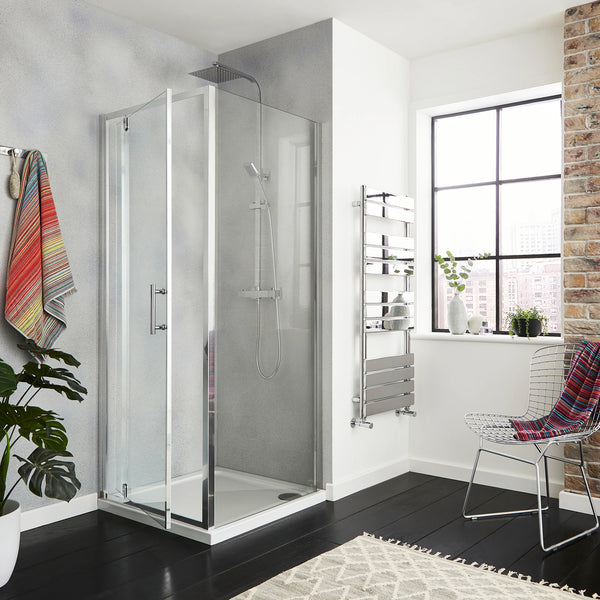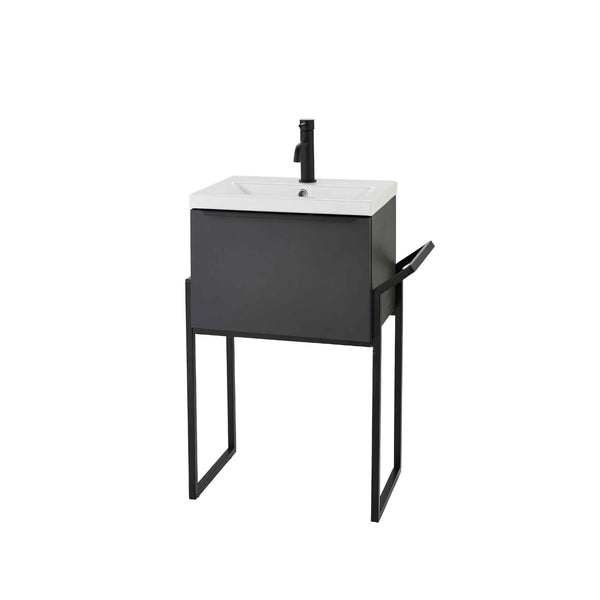Bathroom Water Pressure Explained
16 Apr 2024
Bathroom Water Pressure Explained
Water pressure in plumbing terms refers to the force exerted by water as it flows through your pipes and fixtures. It's like the heartbeat of your bathroom, crucial for ensuring a steady and invigorating flow from your taps and showerheads.
Factors Influencing Water Pressure
What makes water pressure sing or sputter? Well, it's a symphony of factors:
Water Supply Systems: Whether you're connected to mains, drawing from a well, or using pumps, each system has its rhythm that affects pressure.
Plumbing Fixtures: Showers, faucets, and toilets each dance to their own tune, impacting how water flows through your bathroom.
Pipe Materials and Sizes: The material and size of your pipes can either smooth out the flow or create bottlenecks.
Measuring Water Pressure
Ever wondered about PSI or bar units? These are the metrics we use to quantify water pressure. Think of them as the scales for your water's musical performance. And to get a precise reading, you'll need the right tool—a trusty pressure gauge is your bathroom's best friend.
Common Issues with Low Water Pressure
Sometimes, our water pressure hits a low note. It could be due to various reasons like clogged pipes, inadequate supply, or even gremlins (well, maybe not gremlins). Low pressure can dampen your shower experience and leave your faucets dribbling.
Maintenance Tips for Optimal Water Pressure
Just like tuning an instrument, your water system needs regular care. Keep an eye out for leaks, flush your water heater to prevent sediment buildup, and ensure your pipes are in tip-top shape. A little maintenance goes a long way in maintaining that perfect pressure performance.
Types of Water Pressure Systems
Gravity-Fed Systems: Imagine water flowing downhill, propelled by gravity. That's the essence of gravity-fed systems. They're simple, relying on natural pressure from elevated water sources (like tanks or cisterns) to deliver water to your taps and showers. These systems are reliable but may struggle with consistent pressure, especially in multi-story buildings.
Pressurized Systems: Picture a superhero cape on your water supply—it's pressurized! These systems use pumps to boost water pressure, ensuring a steady and forceful flow throughout your home. They're popular for their efficiency and ability to maintain consistent pressure, making them ideal for larger households or properties with varying elevations.
Why Water Pressure Matters
Now, you might wonder, "Why fuss over water pressure?" Well, let's break it down with some real-world scenarios:
Boosting Shower Performance: With the right water pressure, showers transform from mundane routines to luxurious experiences. Say goodbye to weak dribbles and hello to invigorating streams that wash away stress.
Efficient Water Fixtures: High water pressure doesn't just enhance your shower; it also improves the functionality of your faucets, toilets, and appliances. Imagine filling a pot in seconds or flushing with confidence, thanks to optimized water flow optimization.
Pressure Regulator Adjustment: Sometimes, the pressure needs a tweak. Pressure regulators are like volume knobs for your water supply, allowing you to fine-tune the flow for optimal performance and conservation.
Tips for Maintaining Water Pressure
Maintaining the perfect water pressure is like nurturing a delicate garden—it requires care and attention. Here are some water pressure maintenance tips to keep your system in top shape:
Regular Inspections: Check for leaks, clogs, or signs of pressure fluctuations. Early detection can prevent major headaches down the line.
Upgrade to Efficient Fixtures: Invest in low-flow faucets and showerheads that maximize water usage without compromising pressure. It's a win-win for comfort and conservation.
Consult a Professional: When in doubt, seek expert advice. A plumber can assess your system, recommend adjustments, and ensure everything flows smoothly.
Common Issues with Low Water Pressure
Low water pressure in bathrooms can turn a relaxing shower into a frustrating trickle. Understanding the causes of low water pressure is the first step toward solving this common issue.
Causes of Low Water Pressure in Bathrooms
Clogged Pipes: Over time, mineral deposits and debris can accumulate in pipes, restricting water flow.
Faulty Pressure Regulator: A malfunctioning pressure regulator can lead to inconsistent water pressure throughout your home.
Leaky Pipes: Leaks can reduce water pressure by diverting water away from fixtures and appliances.
Old Plumbing Systems: Aging pipes and plumbing fixtures may not be able to handle modern water demands.
Effects on Shower Performance, Faucet Flow, and Toilet Flushing
Low water pressure manifests in various ways:
Shower Performance: Weak water pressure can result in less effective rinsing and reduced shower satisfaction.
Faucet Flow: Faucets may take longer to fill sinks or produce a feeble stream, impacting daily tasks.
Toilet Flushing: Inadequate water pressure can lead to incomplete flushes, requiring multiple attempts.
Improving Water Pressure
Don't let low water pressure dampen your day. Explore these DIY and professional solutions to boost your water pressure and restore your bathroom's functionality.
DIY Solutions:
Clean Aerators: Remove mineral buildup from faucet aerators to improve water flow.
Check for Leaks: Inspect pipes and fixtures for leaks and repair them promptly.
Adjust Pressure Regulator: If safe to do so, adjust the pressure regulator to increase water pressure.
Professional Solutions
Install Booster Pumps: Boost water pressure with a dedicated booster pump installed in your plumbing system.
Pressure Regulator Adjustment: A professional can fine-tune your pressure regulator for optimal water pressure.
Upgrade Fixtures: Install efficient water fixtures designed to maintain consistent water pressure.
FAQs
What is considered normal water pressure?
Normal water pressure in a residential setting typically ranges between 40 to 80 pounds per square inch (psi). This level ensures a steady flow for various bathroom fixtures without causing excessive strain on the plumbing system.
How can I increase water pressure in my shower?
Boosting shower performance can be achieved through several methods, such as installing a high-pressure showerhead designed to maximize water flow or using a pressure regulator to adjust the water pressure at the source. Additionally, ensuring clear water lines and proper maintenance of plumbing fixtures can also enhance water pressure.
Are low-flow fixtures beneficial for water pressure?
While low-flow fixtures are designed to conserve water, they can sometimes lead to reduced water pressure. However, modern low-flow fixtures are engineered to maintain a balance between water conservation and adequate pressure, offering a sustainable solution without compromising on performance.
Conclusion
Maintaining balanced water pressure isn't just about convenience; it's about maximizing your comfort and minimizing wastage. By addressing common issues like low pressure and exploring advanced solutions, you can transform your daily shower into a rejuvenating experience.
Remember, a healthy plumbing system leads to a happier home. Regular maintenance, DIY fixes, and embracing efficient fixtures not only improve water pressure but also contribute to a greener, more sustainable environment.
So, whether you're chasing that perfect shower or aiming for eco-friendly living, the journey starts with understanding and optimizing your bathroom water pressure.













